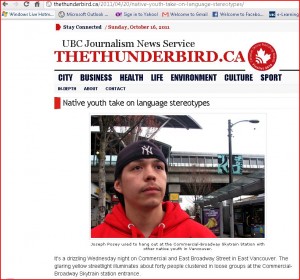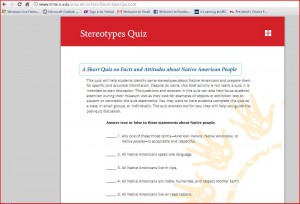I am focusing on the use of technology to document and preserve traditional knowledge and develop curriculum resources. Most of my posts are related to media in supporting an indigenous re-framing of identity and different ways media are being used to share and document traditional knowledge and deal with ownership issues. How different communities and groups have done this, and their successes and issues will be important feedback for any efforts we make up north.
Native Science
A website on Traditional Knowledge with links to other sites developed in Alaska with TK resources dealing with language, culture and the land. The projects are aimed at documenting and preserving TK and developing curriculum resources for the state as well. There is a very good set of guidelines developed by a large number of stakeholders: GUIDELINES FOR RESPECTING CULTURAL KNOWLEDGE.
http://www.nativescience.org/html/traditional_knowledge.html
Alaskan Native Knowledge Network
Articles and resources dealing with traditional knowledge, culture and language including curriculum and resources from all the language groups found in Alaska.
http://www.ankn.uaf.edu/curriculum/Articles/BarnhardtKawagley/Indigenous_Knowledge.html
A detailed article on the place of traditional knowledge in current identity, ecology and development issues from the University of Saskatchewan.
www.win-hec.org/docs/pdfs/Journal/Marie%20Battiste%20copy.pdf
David Bouchard – Portrait of a Metis Writer
Video interview with David Bouchard, a well-known and much respected Metis writer and speaker. We have had David visit out school several times and he is a real champion for strong FN identity – not just Metis. His work is multimedia – writing, partnerships with artists, music – he is very inspiring to youth. Story as the vehicle of traditional knowledge.
http://youtu.be/BdPtMZbgEBY
Nokum is my Teacher
Most of his books are on line in some form. This book is about the Metis culture and the importance of being open to sharing understanding and change.
http://youtu.be/17QYnw5xzWE
Brenda Parlee Website:
Collects her research re traditional knowledge mainly in Alberta and the NWT as it impacts resource development, wildlife management and ecological issues. Some of her research has dealt with traditional knowledge issues in our community of Lutsel K’e, and issues of control in communication and development.
http://www.ualberta.ca/~bparlee/parlee_ongoing.htm
Indian Country Today Media Network
Both US and Canadian sites with videos, blogs and news feeds on international issues from health to politics. The site speaks to solidarity among many ethnic and tribal identities on similar issues.
http://indiancountrytodaymedianetwork.com/canada/



